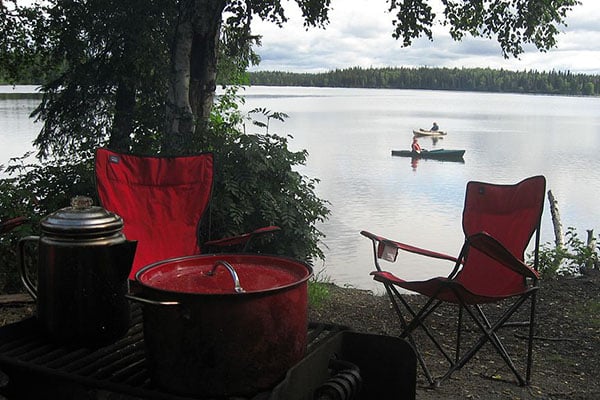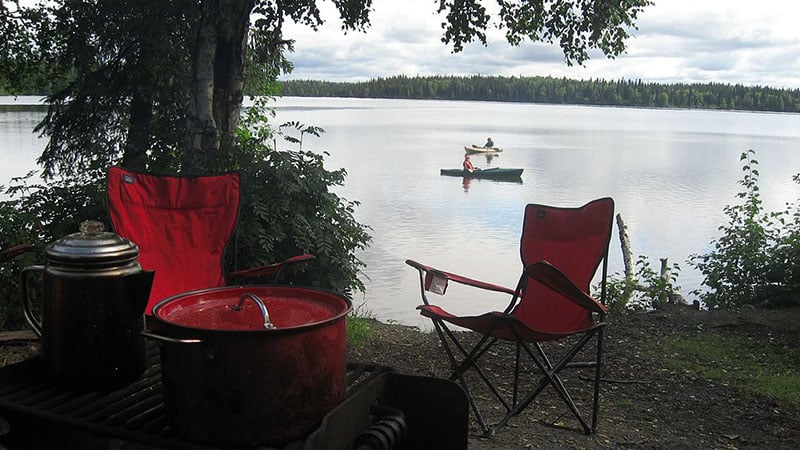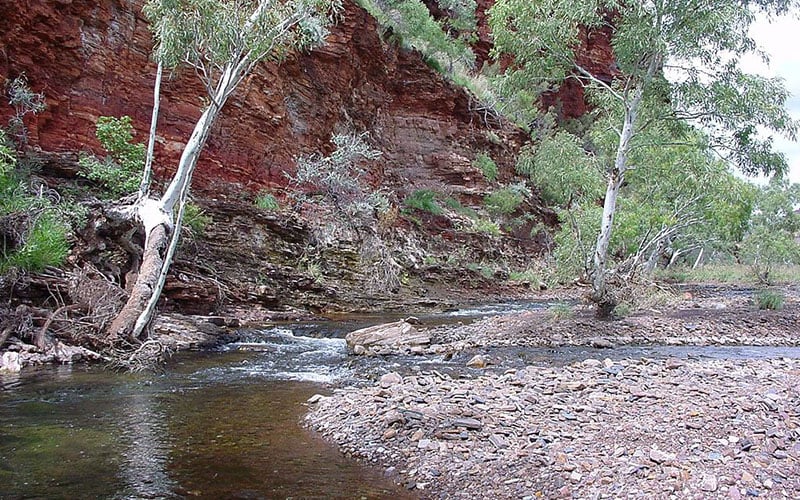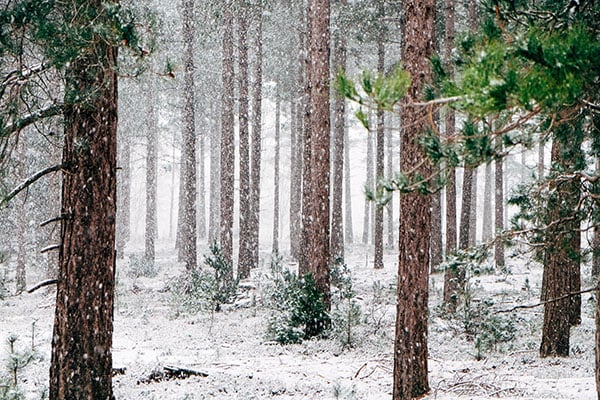Last Updated on
There are a lot of appeals to roughing it on a camping trip, but maintaining proper hygiene and health at the campsite is not usually one of them. The absence of sinks and toilets at primitive sites can make food preparation and hygiene challenging, but certainly not impossible. Still it pays to be cautious, because a bout of giardia or fecal exposure can not only ruin your trip, it can ruin your next couple weeks afterward. Before you head out to camp again, check out these tips to stay healthy around the campsite.
Hand Sanitizer And Soap
Nothing quite provides the instant cleaning effect for camping trips like hand sanitizer, and the ability to use it without water is a huge advantage. Even if sanitizers aren’t scientifically regarded as effective as they are branded (kills 99.9% of germs or something like that), it still is the best and simplest option you have to keep your hands clean. Wipes and pump bottles have a place in any camp kit, and they should be used after bathroom visits and before and during food prep especially. In a pinch, wipes can even be used to sanitize dishes or utensils when soap and water isn’t available.
This said, soap is still the better cleaning option of the two, and if you have access to fresh water and soap at your camp, use it for clean up, especially before preparing food. Certain bacteria are even resistant to hand sanitizers, which makes soap the better option of the two if you have the choice.
Washing Dishes
Using Fresh Water
If you have the choice, it’s always best to pack in water for cleaning and food preparation. This usually involves filling one or two large water containers and then packing them in with the rest of your gear in the vehicle. You can then fill wash tubs with soapy and rinse water to do your cleaning with the packed water. Always use biodegradable soap as the normal variety isn’t as kind on the environment. You never want to wash near a water source like a river, as even biodegradable soaps have been shown to effect water ecosystems. It’s better to take you cleaning to a spot a good distance away from the water source, and make sure no soap is dumped anywhere near the body of water.
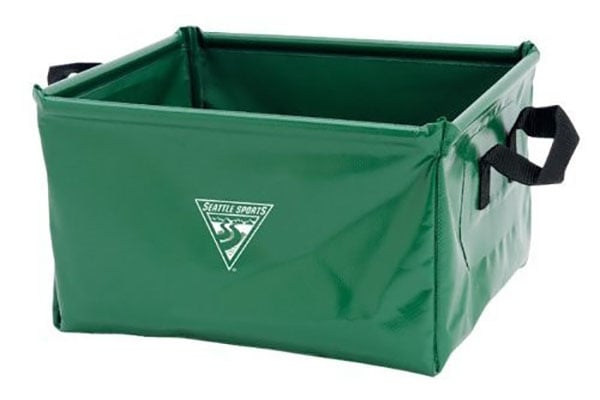
Using Natural Water Sources
If needed, you can use a natural water source for camp washing, but don’t use it for any food prep. First, draw some water from the natural source in a wash tub, and move it far away from the rest of the water. Always draw from fast moving water as opposed to a stagnant pool. Stagnant water is more likely to breed harmful organisms. Any signs of heavy animal travel or dead carcasses in the river are your sign that the water source is unusable, at least in that area. You can however scout upstream for more suitable water sources. Use only biodegradable soap in the wash tub, and never dump it back in the river when finished. Using this method is no guarantee that your camp dishes will be sanitary, and this method is really better for storing used dishes until you can wash them properly at home.
You can improve the quality of the water when drawing from a natural source by using a water filter beforehand. It can take some time to filter enough for washing, but it is much more sanitary. All the other rules with washing apply.
Other Warnings Around Natural Water Sources
It may sound refreshing to use a river to wash up in, but once again, using soap in a river is harmful to the ecosystem. In addition, any contact with your mouth, nose or eyes could lead to a giardia infection, or an even worse bacteria infection. Now you may say, I swim in the local watering hole every summer and I’m fine. That’s probably true, but fact is you are taking a chance by washing in natural water sources. It’s also important to point out you usually take a shower after swimming in a lake or river, but when you’re camping, you may not have that option for a day or more. This gives any potential bacteria more time to get into your system. Open cuts can be another entry point for bacteria, so avoid contact with rivers or lakes when you have an open cut.
We admit, these guidelines are a bit paranoid, but it’s important to know the dangers before you’re accidentally exposed to them. Be careful when you contact rivers or lakes, and be weary of any infections or extreme stomach discomfort afterward.
Going To The Bathroom
Now comes something a little awkward to talk about, going to the bathroom in the wilderness. First, it’s important to note that toilet paper should not be left at the site of your business – so pack it out just like everything else. It helps to bring a plastic sack or other container with you as you do your business for this purpose. When you urinate, do it away from any water source and preferably on rocks over soil. Never urinate directly into a lake or river, as this can again effect the ecosystem.
When you need to do more than urinate, you’ll want to head far away from camp, at least a few hundred feet if possible. Why so far? Well it reduces the chance of anyone else coming across the site. If you camp with dogs, be weary as some might end up rolling in it and bringing an unwelcome surprise back to camp. It sounds disgusting, but it has happened before, often because the site is so close to camp.
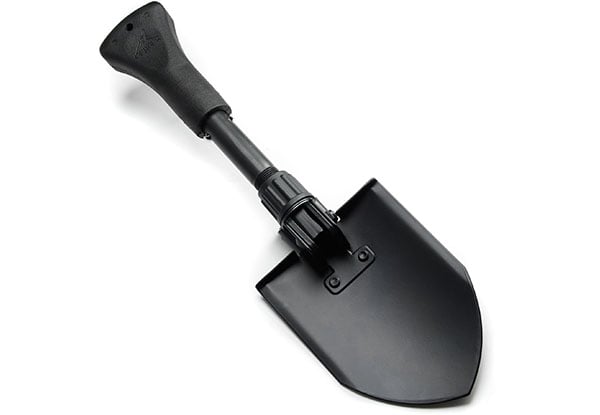
The proper way to do it is to dig a deep hole, a little less than a foot. Make sure you’re a good ways from any water source when you pick a spot. A portable or folding handle shovel is the best tool for the job, but you can get by using a large stick. Once you’re finished, again pack out the paper and cover the hole up. This method offers the best chances for minimal impact on the land and your fellow campers.
Better yet, you can always pack out all the waste when you use a groover or portable toilet. Just make sure to bring heavy duty trash bags and a waterproof bucket for the purpose.
Images one and thumb courtesy of Wikimedia Commons.
